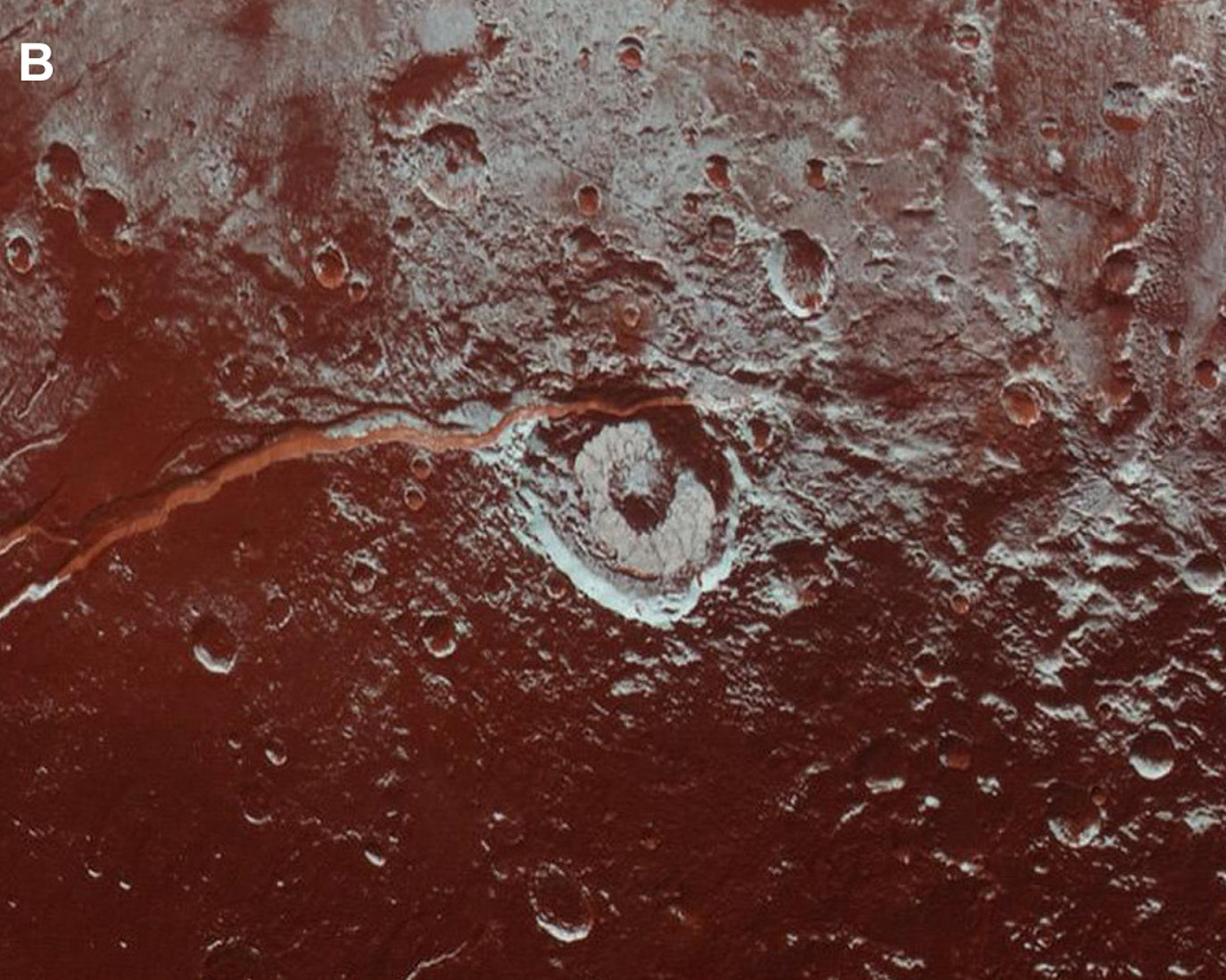Scientists Find Evidence of an Ocean Deep Inside Pluto
Credit to Author: Becky Ferreira| Date: Thu, 30 May 2019 18:28:30 +0000
Scientists have detected ammonia on the surface of Pluto, bolstering the theory that there is a hidden ocean deep inside this distant world.
A rust-coloured patch on Pluto suggests that a mix of liquid water and ammonia periodically upwells to the surface through cryovolcanic vents, according to a study published on Wednesday in Science Advances. Cryovolcanoes are ice-world versions of volcanoes that spew out water, ammonia, and methane instead of ash and molten rock.
“In recent years, ammonia has been a bit like the ‘holy grail’ of planetary science,” lead author Cristina Dalle Ore, a planetary scientist at NASA’s Ames Research Center, told Space.com. “When found, it flags [the presence of] an environment that is conducive to life. This does not mean that life is present—and we have not yet found it—but it indicates a place where we should look.”
Dalle Ore’s team identified ammonia in spectral images taken by the New Horizons spacecraft when it flew by Pluto in July 2015. Ammonia, a compound of nitrogen and hydrogen, undergirds many biological processes and lowers the freezing point of water, thereby boosting the odds that alien worlds might host liquid lakes or oceans.
“Ammonia is a potentially important source of nitrogen in the solar system and plays a pivotal role in planetary chemistry,” said the study’s authors. “Until the work presented here, ammonia had not been detected spectroscopically on Pluto.”
On Pluto, that place to look is called Virgil Fossae, a huge crack tinted red, likely due to periodic splashes of liquid water and ammonia that erupt through surface vents.

Once exposed to sunlight and cosmic rays, ammonia is prone to degradation; that it is detectable at Virgil Fossae suggests that cryovolcanic eruptions occurred recently, perhaps within the past few million years.
Previously, scientists have used surface analysis, geological simulations, and thermal evolution models to support the existence of a subsurface ocean on Pluto. With the new detection of ammonia, Dalle Ore and her colleagues have added “to the evidence for ongoing geological activity on Pluto and the possible presence of liquid water at depth today,” the team said.
Pluto is not the only world in our solar system that scientists think may host underground oceans. For instance, Jupiter’s moons Europa, Callisto, and Ganymede, Saturn’s moons Enceladus and Dione, and outer solar system objects such as Eris and Sedna all show similar signs of liquid water in their interiors.
Even Earth is thought to have an ocean some 700 kilometers under the surface, so hidden seas are a local phenomenon, as well as an extraterrestrial one. This potential abundance of liquid water has major implications in the search for alien life in the universe, both in our solar system and beyond.
This article originally appeared on VICE US.